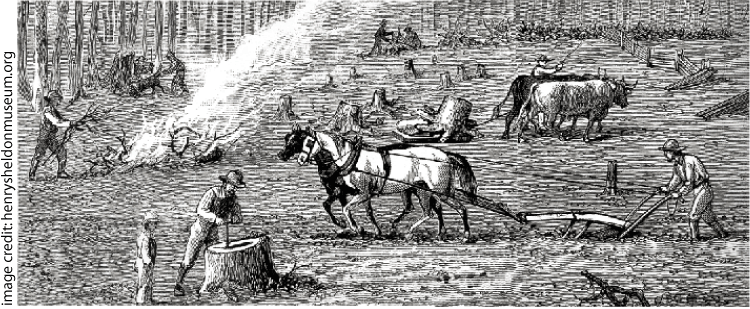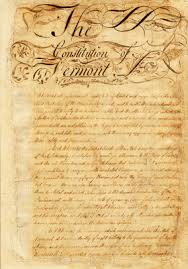The Making of the 50 States: Vermont
Part 1: In the Beginning Vermont was the 14th state admitted to the Union. As with many other states, what is now Vermont was home to Native Americans for many years. The Abenaki and Mohican peoples lived in the western part of the state. Other tribes living and/or hunting in the area included the Chippewa, Narragansett, Natick, Pennacook, Pocumtuc, and Wampanoag. The most powerful Native American tribe in the Vermont area, however, were the Iroquois Mohawk. Noted French explorer Samuel de Champlain arrived in the early 17th Century and claimed what is now Lake Champlain, along with some surrounding land, for France. To help solidify this claim, French settlers and soldiers built Fort Sainte Anne in 1666. This was the first European settlement in Vermont. The first permanent British settlement arrived in 1724, when British soldiers constructed Fort Dummer, in the southeast part of the state. British and French conflict in the area eventually spilled over into the French and Indian War. Some Vermont settlers from England joined the colonial militia and fought for Great Britain, taking part in an attack on France's Fort Carillon, which was a prime focus for fighting during the war because of its location on the western shore of Lake Champlain. British forces under General Jeffery Amherst captured the fort for good in 1759 and renamed it Fort Ticonderoga. The British victory in the French and Indian War ended French settlements in Vermont. British settlements grew steadily and strongly.
In 1750, the regional governor, Benning Wentworth, issued a land grant for a town to organize and control the westernmost part of his crown-issued land claim, Lake Champlain. This became the town of Bennington. An order from King George III in 1764 handed all of Vermont to New York. This resulted in the activism of Ethan Allen and the Green Mountain Boys, who much preferred the New Hampshire Grants instituted by Wentworth. Landholders in New Hampshire and Vermont challenged the king's ruling in court; the disputes turned ugly in March 1775, when a courthouse riot resulted in the deaths of two people.
Six months later, a delegation of 72 met at Windsor to solidify their state. They changed the name of the state to Vermont and then drew up a constitution, which was adopted on July 8 after four days of debate. This Constitution of Vermont abolished slavery, provided for public schools, and allowed the vote for men who did not own land. (The tavern where the constitution was drafted, known as the Old Constitution House, is now a state historic site.) Next page > The Rest of the Story > Page 1, 2
|
|
Social Studies for Kids
copyright 2002–2024
David White



 Boundary disputes were not uncommon in the early history of the Vermont territory. Massachusetts, New Hampshire, and New York all won claims to part or all of what is now Vermont at various times during the English settlement.
Boundary disputes were not uncommon in the early history of the Vermont territory. Massachusetts, New Hampshire, and New York all won claims to part or all of what is now Vermont at various times during the English settlement. The capture of
The capture of 
